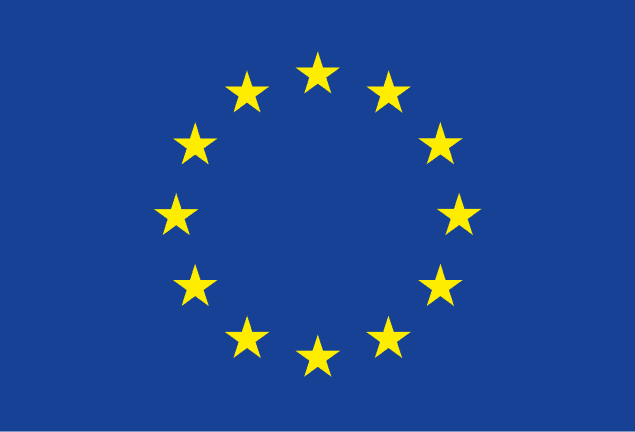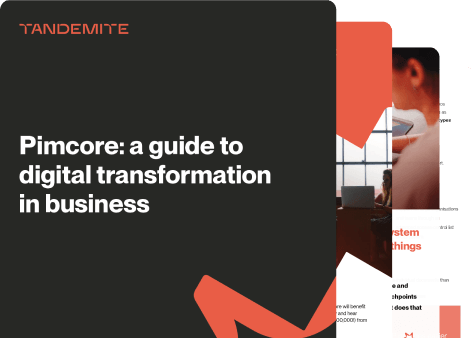The digital landscape continues to evolve, with headless technologies — headless CMS and headless commerce — taking centre stage due to their adaptability and superior user experience. Companies are turning towards these systems to stay competitive and relevant in the fast-paced digital era. From enhanced customization to agile operations, let's dive into the key trends shaping headless technology in 2023.
Headless Commerce: the new mainstay of eCommerce
Let’s start with a brief reminder. What is headless? “Headless" refers to a type of software architecture where the front-end (the "head") is decoupled from the back-end.
This separation allows developers to work on each part independently and provides flexibility in presenting content across various platforms (web, mobile, IoT, etc.), as the same back-end can serve different front-ends.
It’s definitely a game-changer.
Headless CMS - some interesting statistics
A recent study by MarketsandMarkets projects an impressive rise in the global headless CMS market from USD 328.5 million in 2020 to a staggering USD 1,508.3 million by 2025.
As brands aim to streamline their operations and boost sales, headless commerce is becoming a mainstay in the eCommerce sector. Adoption rates have grown by 50%, with retail businesses reporting a 35% increase in conversion rates and 82% growth between 2018 and 2019.
As most of the important headless CMS companies are from Europe, we’re especially keen to fall in love with this technology. And, as it seems, it won’t stop.
So, what are the trends we should keep an eye on?
Headless trends to follow in 2023 and the following years
Adopting API-Driven Platforms
API-driven platforms equip developers with the necessary infrastructure to integrate new applications and services.
APIs enable flexible architectures that can nimbly adapt to shifting market conditions and customer demands, leading to creative and engaging customer digital experiences.
As the use of APIs continues to grow, headless commerce integration becomes increasingly vital, providing operational simplicity and a seamless user experience.
API-Driven Platform Examples
Storyblok is a great example of an API-friendly, headless CMS.
It operates with a component-based approach, which allows developers to build robust and scalable structures that can adapt to any layout or appearance requirement.
Its API-first design ensures that content can be seamlessly delivered to any platform or technology that can make HTTP requests.
This means you can fetch your content for websites, mobile apps, IoT devices, and more, which essentially futureproofs your content for emerging technologies.
Contentful is also an API-friendly, headless CMS, worth checking out.
It’s a modular, content infrastructure-focused system, making it a scalable and highly flexible choice for handling various content types across numerous channels.
In essence, Contentful combines the best of both worlds – the developer-friendly advantages of an API-first, headless architecture with straightforward content editing tools. This balance makes it a preferred choice for many businesses that seek to future-proof their content strategy.
Utilizing AI & Machine Learning
Artificial Intelligence and machine learning technologies leverage data and algorithms to anticipate customer requirements and recommend appropriate products or services.
This personalizes the shopping experience, resulting in higher conversion rates. These technologies also streamline back-end processes like inventory management and order fulfilment, making them integral to both traditional and headless commerce.
Check our TOP 7 ways to use AI in eCommerce and get inspired!

Prioritizing Mobile
A mobile-centric approach is essential for businesses in every sector to ensure ease of customer usage and maximize profit. As mobile shopping gains popularity, creating a mobile-focused experience with headless commerce offers more flexibility and customization.
With a mobile-first strategy underpinned by headless commerce, you can meet changing customer needs without compromising on back-end functionality.
Embracing Voice Commerce
Voice commerce, which leverages voice-activated technology like smart speakers or virtual assistants, allows customers to shop anytime.
It eliminates the need for traditional front-end interfaces, creating a more streamlined and intuitive shopping experience.
The popularity of voice commerce is expected to increase as voice technology continues to develop.
Incorporating Blockchain Technologies
Blockchain technology enables secure, transparent transactions, and eliminates the need for intermediaries like banks.
This technology, due to its decentralized data storage and management, also makes data less prone to hacking.
Its application in supply chain management, smart contracts, and secure payment processing, among others, is a growing trend in headless commerce.
Pioneering Virtual Reality Shopping
Virtual reality shopping offers a fully immersive, interactive shopping experience where customers can explore 3D products.
This helps create a physical store-like experience online, promoting confident purchasing decisions and reducing buyer's remorse. As virtual and augmented reality experiences become more popular, VR shopping is also gaining ground.
Integrating Social Media
Incorporating social media into headless commerce strategies is essential as consumers increasingly discover and purchase products on these platforms. This makes shopping a more seamless and personalized experience.
It's no longer just about colourful ads or brand awareness—now customers can directly purchase products from social media platforms, reducing cart abandonment and hesitations, thereby boosting sales.
Deploying eCommerce Microservices
eCommerce revenues are projected to hit $7.5 trillion by 2025, leading brands to seek novel systems to stand out. Microservices, which are favoured by major brands like Amazon, Netflix, and Etsy, are an effective solution to manage traffic peaks and safely test new trends and technologies.
They work well with headless commerce setups and help build complex omnichannel systems.
Establishing an Omnichannel Presence
Today's customers expect a seamless shopping experience across various channels, including online, mobile, social media, and physical stores. Headless commerce enables the separation of front-end presentation from the back-end commerce platform, ensuring a consistent user experience across all channels.
By leveraging data analytics and AI, each customer's shopping experience can be personalized, leading to increased satisfaction and revenue growth.

Headless CMS - possible challenges
The journey towards implementing a headless CMS is not without its challenges, but it's definitely worth it.
Here are some key considerations to bear in mind:
- Implementation Complexity. Implementing a headless CMS can involve complex development and configuration, demanding more from developers compared to traditional CMS platforms.
- Consistency across Channels. Ensuring that content is consistently formatted and displayed across various devices and channels can be challenging due to the distinct presentation logic of each platform.
- Additional Resources. A headless CMS may require the integration of additional tools and resources, such as API management tools and cloud infrastructure, adding to operational expenses and technical complexities.
- Support and Maintenance. Ongoing support for optimization, performance, security, and scalability is necessary, which requires dedicated technical resources.
- Regular Updates. Staying up-to-date with the latest technologies and security standards is crucial, necessitating regular updates and continuous monitoring of the tech ecosystem.
These challenges, while potentially daunting, can be successfully navigated with the right expertise. That's where we, at Tandemite, step in. If you want a successful, converting and modern service, with our help you’ll get it.
Our experience in the field and our dedication to tailoring solutions to each client's unique needs allow us to guide businesses through the complexities of headless CMS implementation.
Summary
From personalized customer experiences to enhanced adaptability, the trends in headless technologies are revolutionizing the digital landscape.
Businesses that leverage these trends will be better positioned to enhance their online operations, offer superior customer experiences, and stay ahead of the competition. As we move further into 2023 and beyond, these headless technology trends will continue to evolve, reshape, and define the future of digital commerce and content management.
Where should you start? The right headless CMS would be a good idea. Contact us and we will help you with making the best decision for your business.







